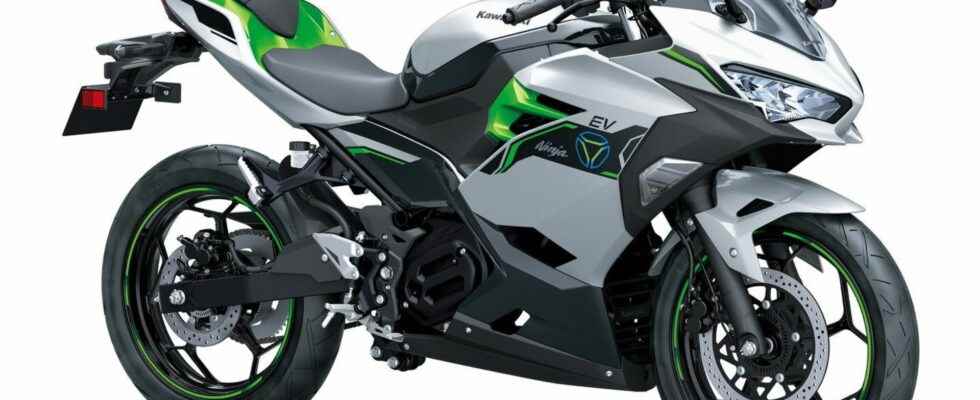Kawasaki took advantage of the EICMA show in Milan to unveil its two new electric motorcycles, the Ninja and Z EV. Launched in 2023, they are disappointing on certain points.
Car manufacturers are not the only ones to invest massively in the development of electric motors. This is also the case for two-wheeler brands, more and more of which are entering this niche. We are of course thinking of Zero Motorcycles, but also of more traditional players, such as Harley-Davidson or Kawasaki. In 2021, the Japanese firm announced the launch of three electric models. A few months later, we got some additional information about them.
Two models approaching
According to the first information, two motorcycles were to be presented. If their name had not been communicated, their serial numbers, namely NX011AP and NR011AP, suggested that they would be Sports and Super Sports category models falling into the 125cc category.
A few months later, Kawasaki gives more details on these two models, officially unveiled at the EICMA show which is currently taking place in Milan. Named Ninja and Z BEVthese new arrivals are currently still in the prototype stage, but they still seem very close to the production version.
The brand’s boss, Hiroshi Ito, announced during the press conference that ” these pre-production vehicles will become real production machines available to our customers in 2023 “. He also confirmed that these motorcycles can be driven with an A1 license, allowing as a reminder to take the handlebars of two wheels with a maximum displacement of 125 cm³. This means that their power must not exceed 11 kW, i.e. the equivalent of 15 horsepower. These Ninja and Z EV will therefore mainly be used for daily travel, as the brand manager points out.
Autonomy that will certainly disappoint
Thereby, both motorcycles carry a very small battery of only 3 kWh. By way of comparison, the productions of Zero Motorcycles oscillate between 7 and 17 kWh, while even the very accessible Dayi E-Odin 2.0 has a capacity of 7.2 kWh.
If Kawasaki did not give more details, the site Electrek emphasizes that the autonomy should then not exceed 75 kilometers in a single charge, which is very little. But to compensate for this big defect, thehe Japanese brand offers interchangeable batteries reducing the time spent recharging. We doubt that this is enough to convince potential customers who may go and see the competition.
For the time being, no information has yet been given on the power, performance and equipment of these two novelties. For memory, the firm had unveiled an electric Ninja prototype three years earlier, equipped with a 10 kW motor, i.e. 14 horsepower, which can reach 20 kW (about 27 horsepower) during power peaks. The announced autonomy was then 100 kilometers. As detailed in a press release from Kawasaki, the manufacturer also unveiled its very first hybrid motorcycle, again in pre-series form. The final version should arrive in 2024.
To follow us, we invite you to download our Android and iOS application. You can read our articles, files, and watch our latest YouTube videos.
